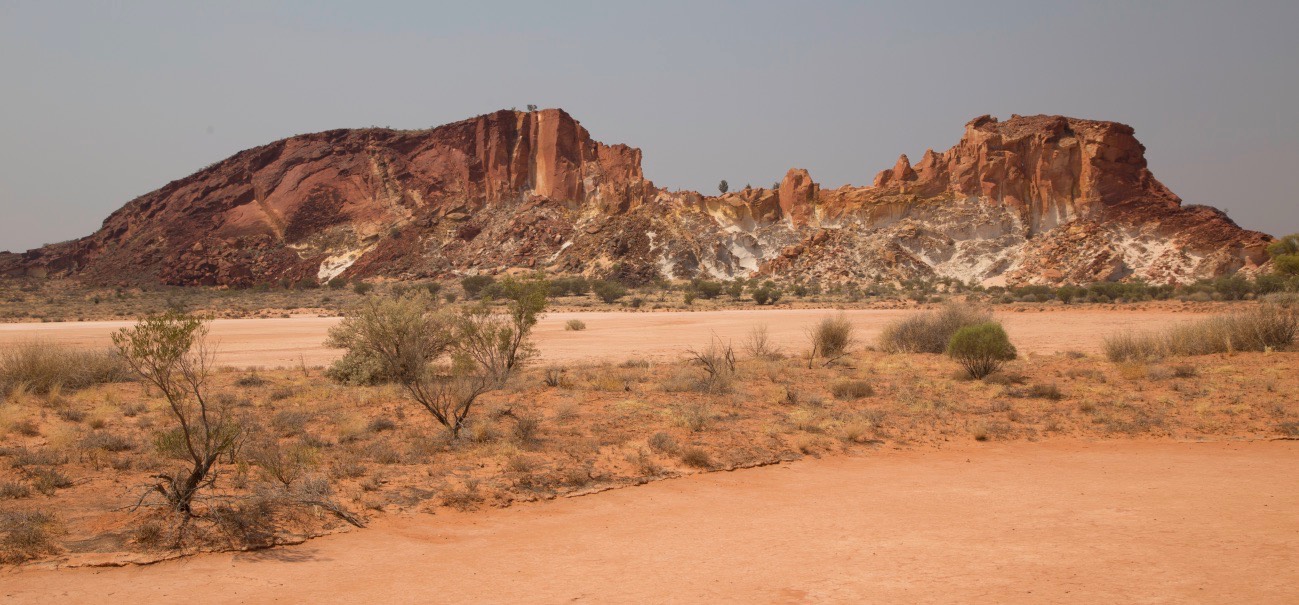
Rainbow Valley
Delving into the history of Alice Springs one finds that a lot of innovations to life in the outback started here. Once Alice was just a telegraph station next to some "springs”. Here messages from Darwin, coming from overseas were received and transmitted on to Adelaide. Only when the old Ghan railway was extended, a township formed.
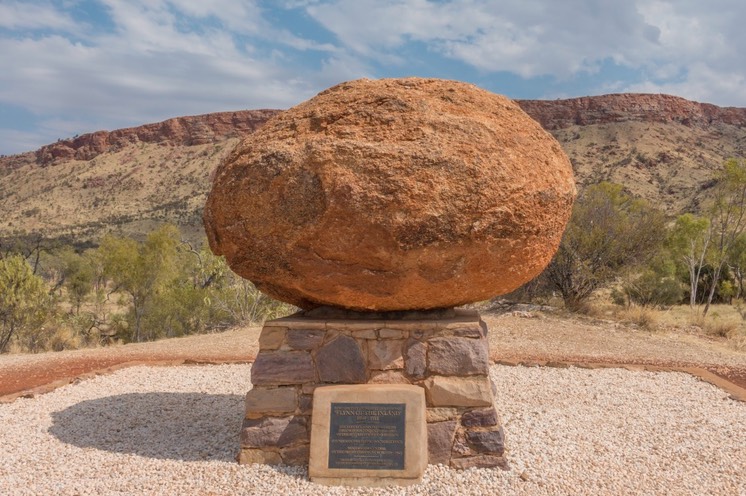
In 1928 Reverend John Flynn (whose ashes are buried under this rock) founded the Flying Doctors service making use of the new technology of flying. The invention of the Traeger Pedal Radio allowed communication between a doctor and isolated cattle stations up to 500km away. 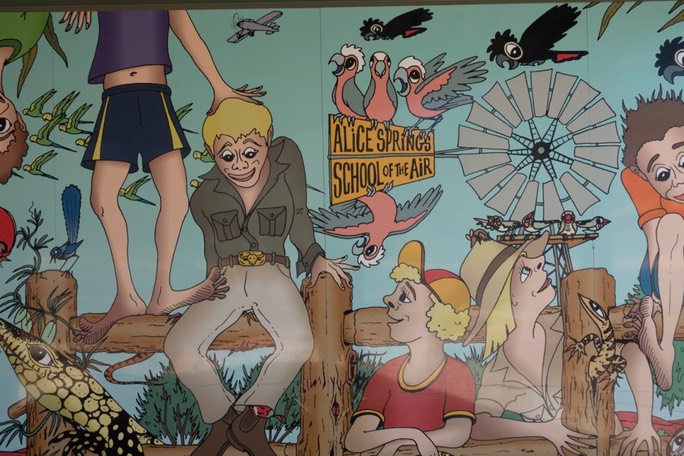
The Traeger radio was later used by the "School of the Air" when it established here in Alice in 1951. A first in the world, it delivered education via radio to remote Australia. Today, radio communication and posted teaching material has been replaced by computers, printers and web-cams.
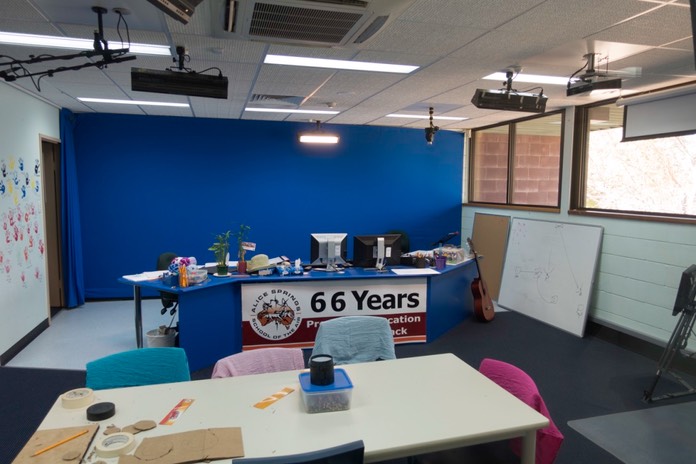 The School of the Air now proudly claims to be the “largest classroom in the world” reaching across 1,300,000 square kms, 3.5 times the size of Germany and 10 times the size of England. Of course the number of pupils are low as there are only very few families living too far (more than 50kms) from a community school to qualify for the programme.
The School of the Air now proudly claims to be the “largest classroom in the world” reaching across 1,300,000 square kms, 3.5 times the size of Germany and 10 times the size of England. Of course the number of pupils are low as there are only very few families living too far (more than 50kms) from a community school to qualify for the programme.
Currently there are 142 students attending the Alice Springs School of the Air. When we visited they were all at the school for a special on-campus day. This happens about 3x per year and is very exciting for the children who otherwise only communicate with each other via computer chatroom. The computer teaching program has icon buttons like a hand for a student to let the teacher know that they want to ask a question or contribute during a lesson. There is also a feature all school teachers I know would love: a mute button a teacher can use to quiet a too chatty student!
Having had days to explore while waiting for car news, we went a little further afield. We visited Rainbow Valley and the East MacDonnell Ranges one day, then packed our small swag and toured through the West MacDonnell Ranges for another couple of days. The rock formations, gorges and gaps, some sacred aboriginal sites, speak for themselves:
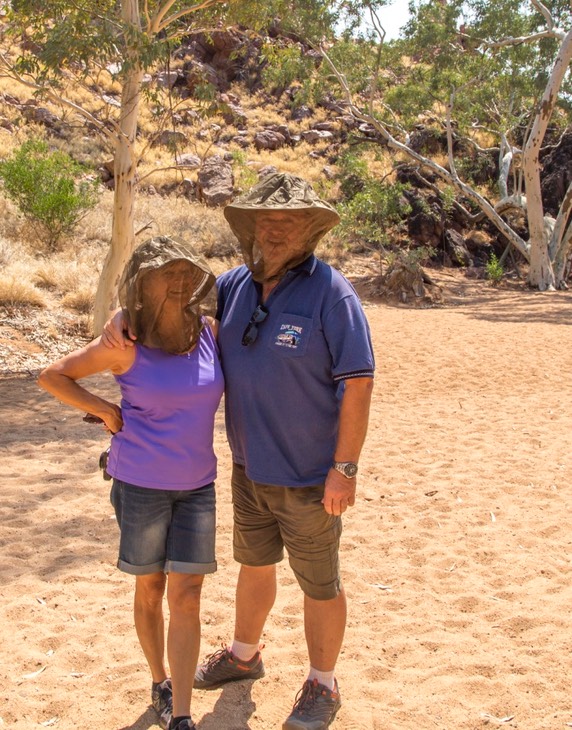
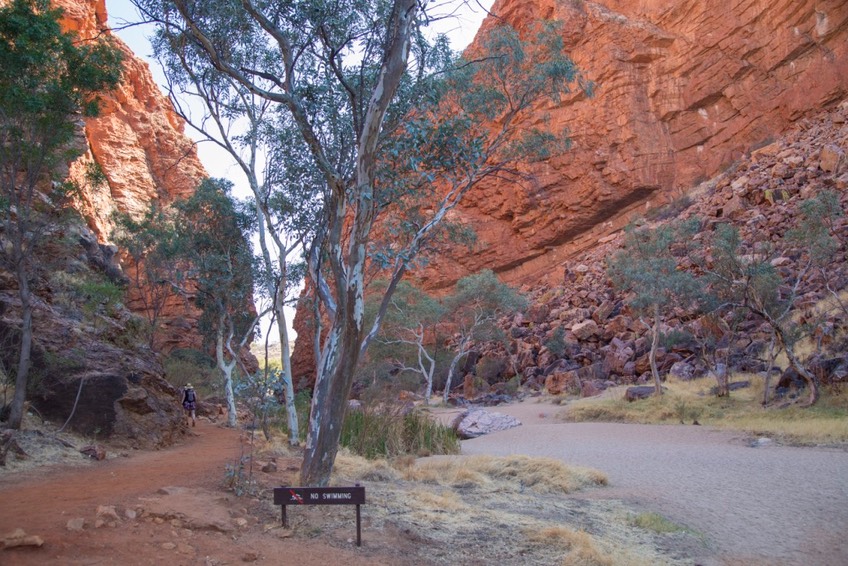
Austin and I following the latest fashion previously modelled by our friend Vicky. Thank you Vicky! The "Mozzie Nets" worked just great keeping the all too friendly local flies away!
Emily Gap with Aboriginal paintings of the three sacred caterpillars:
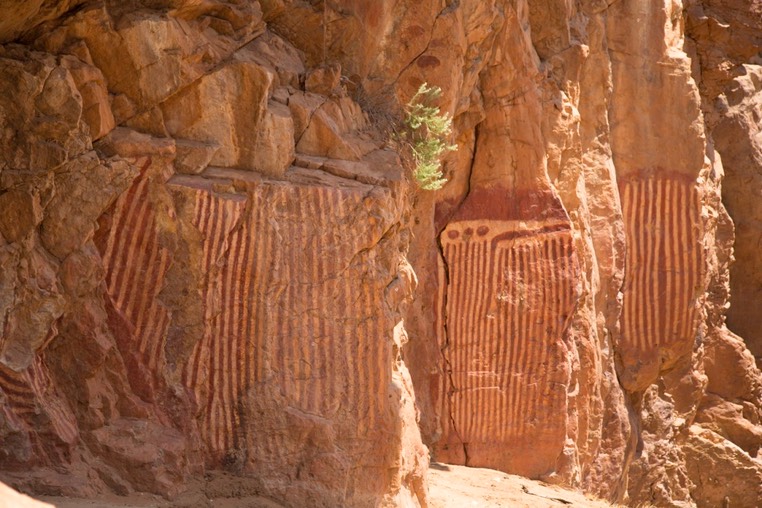
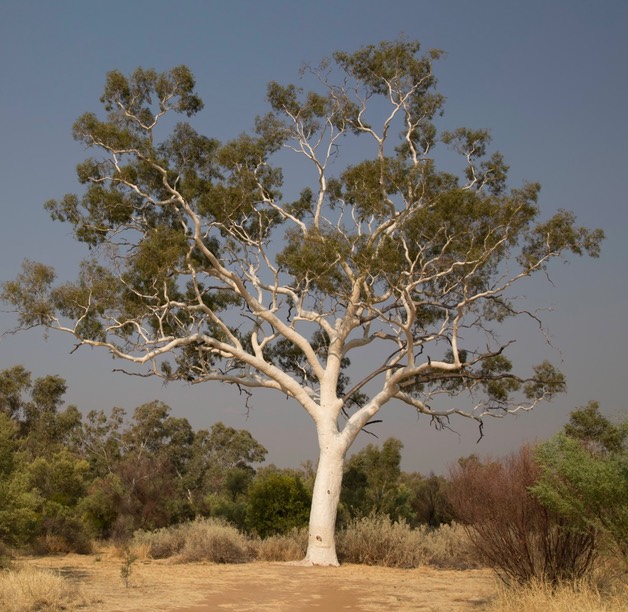
My favourite tree. This 300 year old ghost gum stands 33m high.
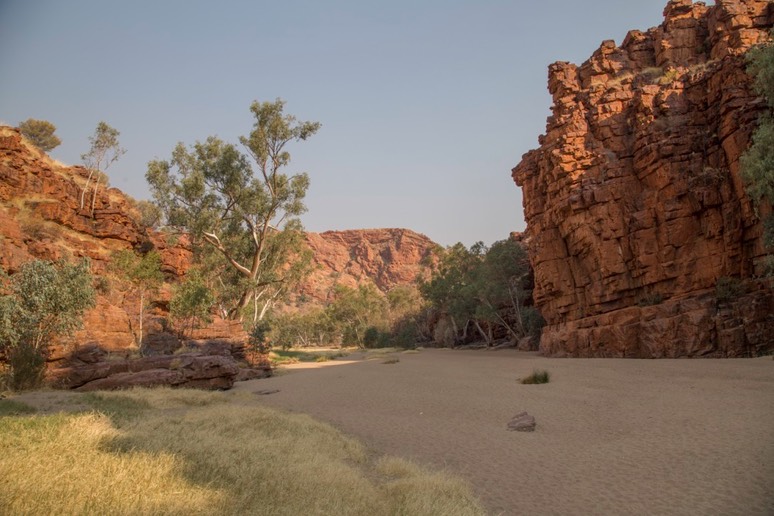
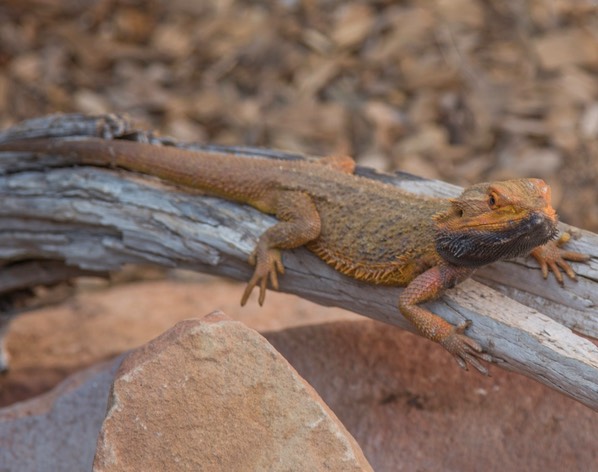
Bearded Dragon
Trephina Gorge - East MacDonnell Ranges. No water here either!
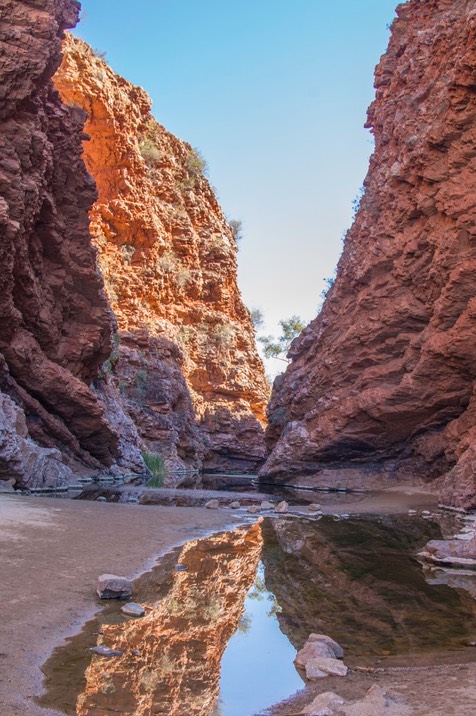 Travelling west along the Namatjira Drive, named after the famous aboriginal painter, Albert Namatjira, we followed the many side tracks to picturesque locations like Simpsons Gap and Ellery Creek Big Hole.
Travelling west along the Namatjira Drive, named after the famous aboriginal painter, Albert Namatjira, we followed the many side tracks to picturesque locations like Simpsons Gap and Ellery Creek Big Hole. 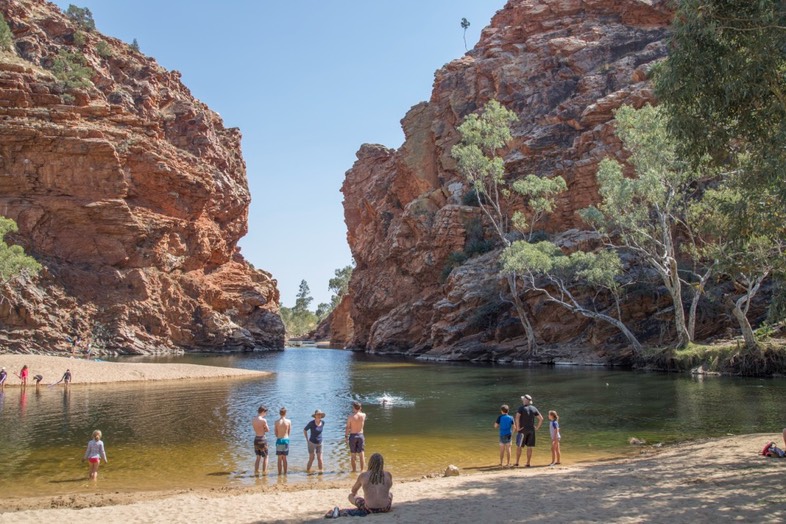 Yeh! This time a waterhole with water! This spring water was freezing cold, but a welcome refreshment on a 38 degree day! After a picnic lunch at the Ochre Pits we moved on to Ormiston Gorge, where a nice breeze cooled us just enough to climb to the Gap Lookout.
Yeh! This time a waterhole with water! This spring water was freezing cold, but a welcome refreshment on a 38 degree day! After a picnic lunch at the Ochre Pits we moved on to Ormiston Gorge, where a nice breeze cooled us just enough to climb to the Gap Lookout. 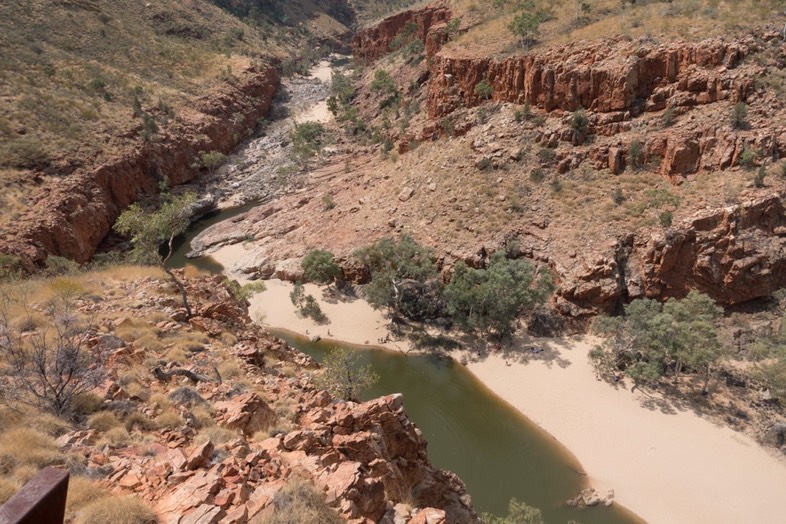 From here we had a wonderful view of the gorge and the tiny people enjoying a swim from the top.
From here we had a wonderful view of the gorge and the tiny people enjoying a swim from the top.
(below one of many rock wallabies at Simpsons Gap)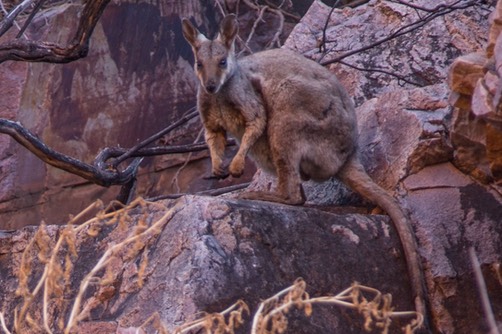
Our final destination was a Woodland Campsite at red bank Gorge where we put up our swag for the night. The campsites in this National Park were lovely and we were all by ourselves, or so we thought! Too late we realised that the choice of campsite was a mistake: not only were we inundated by flies (the mozzie nets came out again) but we were also joined by not one, not two, but a whole swarm of bees! We managed somehow to eat our chilli-olive tortellinis. 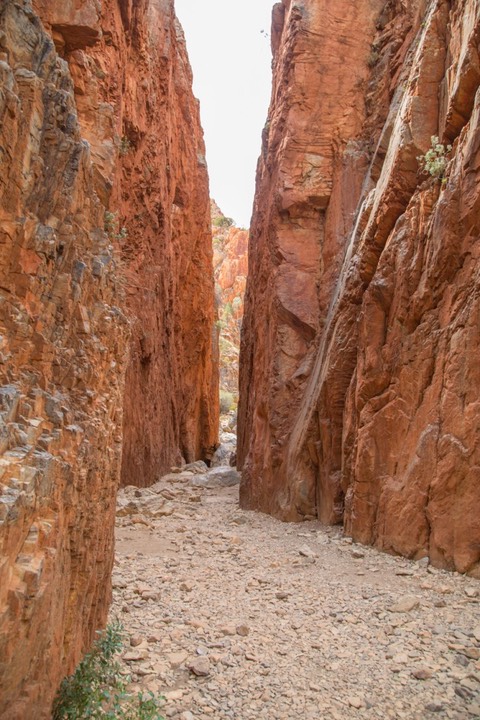 But the bees just kept on coming. They seemed to be especially attracted to a new bright orange washing up dish Austin had purchased, and, before we could do something about it, some suicided in my dish water. Their mates were back for breakfast the next day, but we tricked them by taking our coffee and muesli to another picnic table!
But the bees just kept on coming. They seemed to be especially attracted to a new bright orange washing up dish Austin had purchased, and, before we could do something about it, some suicided in my dish water. Their mates were back for breakfast the next day, but we tricked them by taking our coffee and muesli to another picnic table!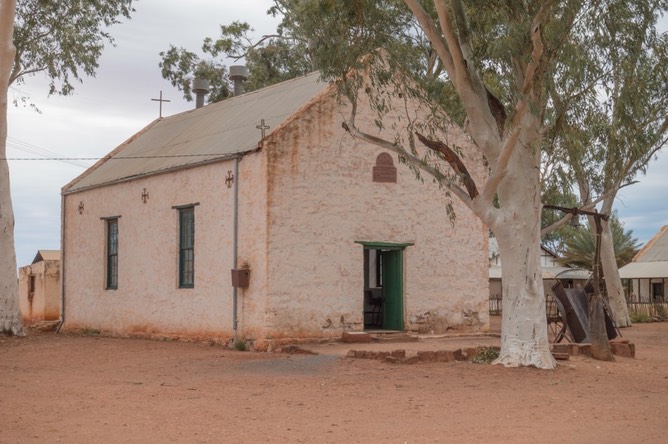
On the southern loop back towards Alice Springs lays the former Lutheran Mission Hermannsburg. In 1887 two German missionaries were sent from Adelaide to establish a mission and introduce the local Aborigines to the Christian faith. In horrendous dry and hot conditions it took them 20 months to reach this remote outpost. The original buildings of the mission are now a museum with lots of memorabilia and the teahouse offers homemade scones and apple strudel. The mission still functions as a church.
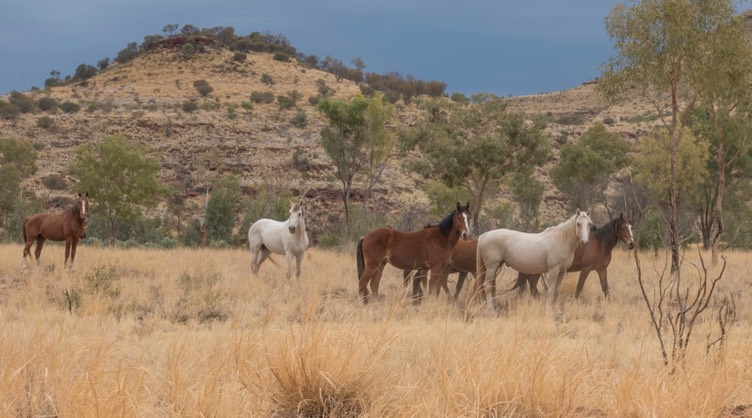
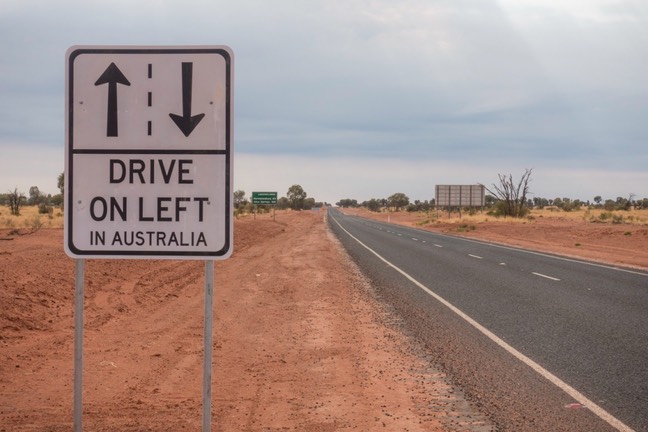
(Above wild horses and a funny sign we saw on the side of the road near Hermannsburg, most probably aimed at European or American tourists in camper vans!)
One of our last stops was going to be Palm Valley, a grove of 3000 tall cabbage tree palms.
It is only accessible with a high clearance 4wheel drive vehicle down a 22km dirt track from Hermannsburg. I practised my off road skills driving through deep sand ruts and stony creek beds, but then chickened out about 5kms before the end. No sooner had we swapped seats when we came across a congregation of 4 wheel drives and heard that a truck was bogged in deep sand further down and that there was no passing or moving it. A recovery towing vehicle was also not available for several hours. So we had no choice but to turn around.
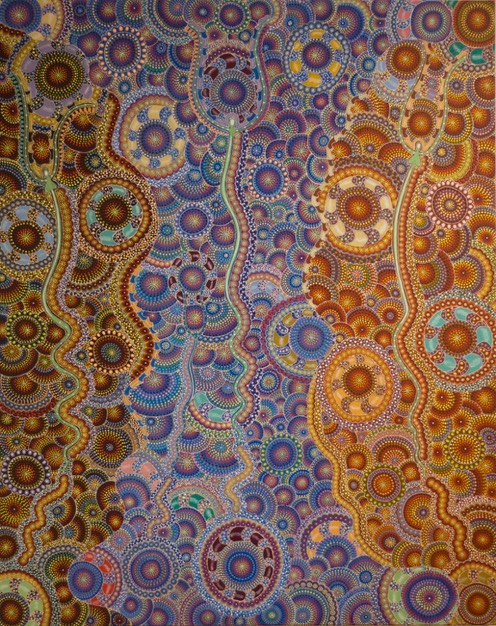
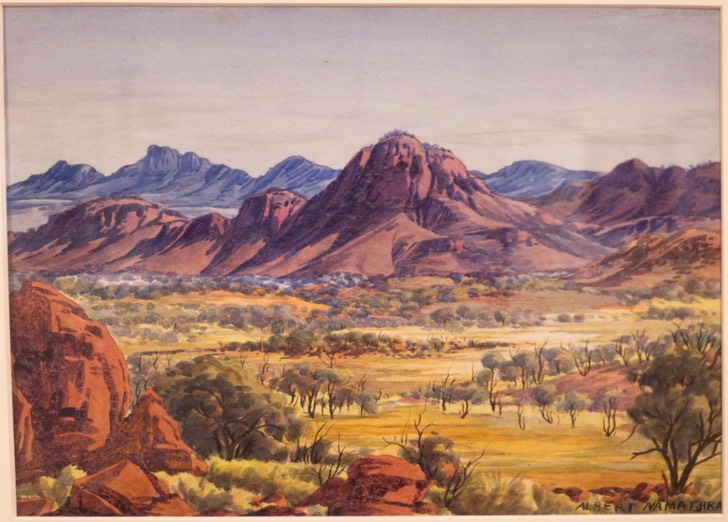
On our return to Alice we passed Albert Namatjira’s house whose paintings of the local area we had admired in the Araluen Arts Centre in Alice Springs.
An Albert Namatjira painting
Apart from the Namatjira Gallery, the museum show cases the best of traditional and modern aboriginal art.
The work which has gone into some of the dot paintings is just awe-inspiring!
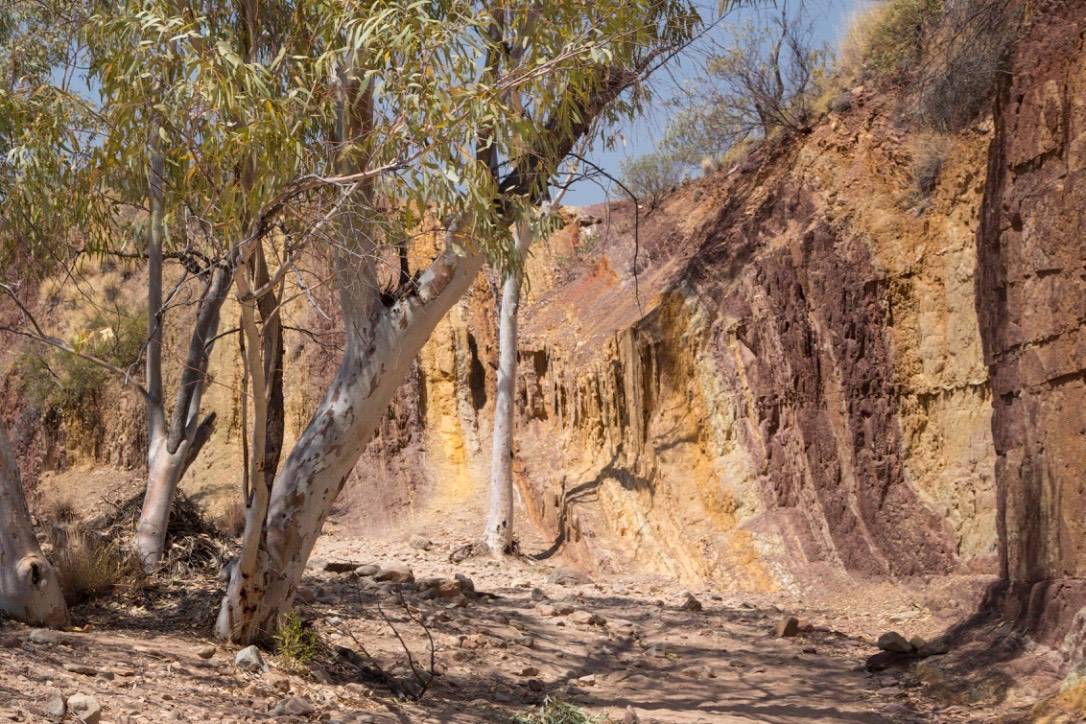
The Ochre Pits - nature’s paintbox